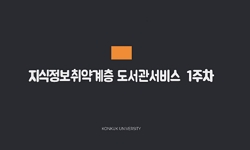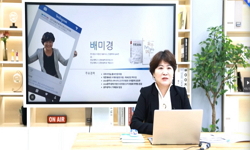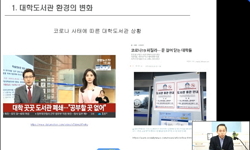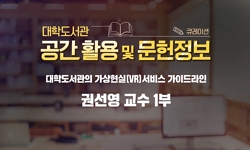이 글은 한국 서원의 도서관적 기능을 장서 구축과 관리라는 측면에서 살펴본 것이다. 한국 서원 장서는 기증, 구매, 출판 등의 방법에 의해 구축되었다. 서원별ㆍ시기별로 차이는 나지만 장...
http://chineseinput.net/에서 pinyin(병음)방식으로 중국어를 변환할 수 있습니다.
변환된 중국어를 복사하여 사용하시면 됩니다.
- 中文 을 입력하시려면 zhongwen을 입력하시고 space를누르시면됩니다.
- 北京 을 입력하시려면 beijing을 입력하시고 space를 누르시면 됩니다.

한국 서원 장서의 구축과 관리 제도의 변화 = Changes in the construction and management system of Korean seowon collections of books
한글로보기https://www.riss.kr/link?id=A107773932
- 저자
- 발행기관
- 학술지명
- 권호사항
-
발행연도
2021
-
작성언어
-
-
주제어
서원 ; 도서관 ; 원규 ; 장서 ; 책판 ; seowon ; library ; Seowon regulations ; collection of books ; Wooden Printing Blocks
-
등재정보
KCI등재후보
-
자료형태
학술저널
-
수록면
181-239(59쪽)
-
KCI 피인용횟수
0
- DOI식별코드
- 제공처
-
0
상세조회 -
0
다운로드
부가정보
국문 초록 (Abstract)
이 글은 한국 서원의 도서관적 기능을 장서 구축과 관리라는 측면에서 살펴본 것이다. 한국 서원 장서는 기증, 구매, 출판 등의 방법에 의해 구축되었다. 서원별ㆍ시기별로 차이는 나지만 장서의 토대를 형성한 것은 국가에서 내려준 내사본과 지방관, 후손, 문인들의 기증본이었다. 초창기 서원 운영과 관련하여 이들 서적의 기증은 서원 재정을 크게 경감시켜 주었다. 또한 당시 기증된 도서는 원규에 명시된 대로 유생들의 교육에 필수적인 경전과 사서, 성리서 등이 대부분이었다. 17세기중반이후부터 국가에 의한 반질보다는 지방관 개인내지 여타 서원ㆍ문중에서의 서적 기증이 증가하였다. 이외에도 상호교환 내지 등서(필사)를 통한 서적 구비도 보인다. 한편 구매를 통한 서적 구입은 초창기 서원 이래로 서원 장서를 구성하는 가장 일반적인 방법이었다. 또한 각 서원에서 필요로 하는 서적을 갖출 수 있다는 점에서 꾸준히 활용되었다. 하지만 서적의 구입은 구매처의 제한과 비용 부담으로 인해 대량 구매는 어려웠으며, 원하는 서적을 구매하지 못하기도 했다. 그래서 비용 부담이 적은 인출이나 필사, 교환을 통한 방법도 선호되었다. 출판을 통한 장서 구비는 제향인의 위상과 서원의 경제력에 따라 차이가 났다. 그래서 서원에서의 출판은 각 지역의 거점 서원을 중심으로 진행되었다. 18세기 이후에는 제향인의 후손과 문인의 문집을 서원에서 간행함으로써 혈연적, 사회적 네트워크를 강화하여 서원의 사회적 위상을 유지하고자 했다.
이렇게 수집된 장서와 제작된 책판들을 관리하는 것도 서원의 주요 업무 중 하나였다. 서원은 서적을 장서각ㆍ어서각 등에 보관하였다. 이중에서 서원에서도 특별히 중요하게 여기는 책들은 별도의 상자에 보관하였다. 책판은 속사에 보관하거나, 장판각 등을 건립하여 보관하였다. 수많은 장서는 서원 교육뿐만 아니라 서원의 위상을 알리는데도 주요했다. 대부분의 서원은 원규로서 정기적 점검과 서책의 반출을 금지하였다. 하지만 18세기 이래로 서원의 재정이 어려워지고 많은 원사가 건립되면서 서원 운영에 직접적 영향을 주는 지방관과 후손가 및 일부 유력 가문들의 서적대여 요청을 들어주지 않을 수 없었다. 이에 서적대여를 단속하고, 관리를 강화했지만 별다른 효과를 거두지 못하였다. 그래서 서적 반출을 막기 어렵다는 현실을 반영하여 서적을 대여하는 규정을 개정하되, 서적의 분실ㆍ훼손에 대한 책임을 명확히 하였다. 이상과 같이 한국의 서원은 16세기 이래로 오랜 세월에 걸쳐 다양한 방법으로 장서를 축적해 왔으며, 향촌의 지식인들은 서원을 이용하면서 지식을 습득ㆍ보급해 나갔다. 이 과정에서 서원은 사회적 연결망을 구축ㆍ확대하는 한편, 그것을 통해 해당 지역을 대표하는 교육기관이자, 공론 형성기관으로 자리매김할 수 있었다.
다국어 초록 (Multilingual Abstract)
The collection of seowon in Korea was built by donation, purchase, and publication. Although there are differences by seowon and period, the foundation of the collection was formed by internal copies issued by the government and copies donated by loca...
The collection of seowon in Korea was built by donation, purchase, and publication. Although there are differences by seowon and period, the foundation of the collection was formed by internal copies issued by the government and copies donated by local officials, descendants and writers. In connection with the operation of the early seowon, the donation of these books greatly reduced the seowon's finances. Also, most of the books donated at that time were scriptures, librarians, and neo-confucian book, which were essential for the education of Confucian scholars as specified in the original rules. From the middle of the 17th century onwards, the donation of books from individual local government officials or other seowons and families increased rather than banjil by the state. In addition to this, the provision of books through mutual exchange or transcripts is also shown.
On the other hand, purchasing books through purchase has been the most common way to organize a collection of seowon since the early days of seowon. In addition, it was continuously used in that it was possible to obtain the necessary books for each seowon. In fact, most seowon had to have their own collections since their establishment. The collection of collections through donation and visitation corresponds to some special vows. However, it was difficult to purchase books in bulk due to the restrictions and cost burden of the place of purchase, and some were unable to purchase the books they wanted. Therefore, methods such as withdrawals, transcriptions, and exchanges, which are less costly, were preferred. However, since the 18th century, most of the seowon lost their educational function due to financial deterioration, and many seowon did not even have a collection. The availability of collections through publication differed according to the status of the jehyangin and the economic power of the seowon. Therefore, the publication of the seowon was carried out centering on the base seowon in each region. Most of the books published in Seowon are the collections and books of Jehyangin.
One of the main tasks of the seowon was to manage the books collected in this way and the bookshelves produced. In the seowon, books were stored in Jangseogak and Seogak, etc., covered with bookcases. In addition, manuscripts and documents generated during the operation of the seowon were stored separately according to their characteristics. Among them, the books considered particularly important in the seowon were kept in separate boxes. Bookboards were stored in the Jangpangak.
Most of the seowons wongyu, and regular inspections and taking out of books were prohibited. However, since the 18th century, as the finances of the seowon became difficult and many seowons were built, they had to comply with the book rental requests of local officials, descendants, and some influential families who directly affect the operation of the seowon. In response, Wanmun and Wanui were enacted to crack down on book rental and strengthen management, but to no avail. Therefore, reflecting the reality that it is difficult to prevent books from being taken out, the regulations for lending books were revised, but responsibility for loss or damage of books was clarified.
As such, Korean seowon have accumulated collections in various ways over a long period of time since the 16th century, and intellectuals in rural areas acquired and disseminated knowledge while using seowons. In addition to this library role, Jehyangin's books were transmitted and spread by publishing and disseminating his books. In the process of book plate production and book dissemination, seowon was able to establish and expand social networks, and through it, it was able to establish itself as an educational institution representing the region and an institution for forming public opinion.
참고문헌 (Reference)
1 李春熙, "李朝書院文庫目錄" 국회도서관 1969
2 이수환, "회재 이언적과 옥산서원" 동국대학교 사학회 96 : 1997
3 "한국학자료센터"
4 옥영정, "한국의 서원문화1" 한국서원연합회 2013
5 "한국국학진흥원 유교넷"
6 "한국국학진흥원 소장자료검색"
7 배현숙, "퇴계 장서의 집산고:개인문고의 서원문고화의 일례로서" 한국서지학회 90 : 1994
8 이수건, "조선후기 경주지역 재지사족의 향촌지배" 영남대학교 민족문화연구소 95 : 1994
9 윤상기, "조선조 경남지방의 서원판본" 한국서지학회 (60) : 5-35, 2014
10 설석규, "조선시대 유교 목판 제작배경과 그 의미" 한국국학진흥원 6 : 2005
1 李春熙, "李朝書院文庫目錄" 국회도서관 1969
2 이수환, "회재 이언적과 옥산서원" 동국대학교 사학회 96 : 1997
3 "한국학자료센터"
4 옥영정, "한국의 서원문화1" 한국서원연합회 2013
5 "한국국학진흥원 유교넷"
6 "한국국학진흥원 소장자료검색"
7 배현숙, "퇴계 장서의 집산고:개인문고의 서원문고화의 일례로서" 한국서지학회 90 : 1994
8 이수건, "조선후기 경주지역 재지사족의 향촌지배" 영남대학교 민족문화연구소 95 : 1994
9 윤상기, "조선조 경남지방의 서원판본" 한국서지학회 (60) : 5-35, 2014
10 설석규, "조선시대 유교 목판 제작배경과 그 의미" 한국국학진흥원 6 : 2005
11 이수건, "조선시대 영남서원자료" 국사편찬위원회 1999
12 육수화, "조선시대 서적의 보급과 교육기관의 장서관리 - 관 주도의 도서간행을 중심으로 -" 교육사학회 25 (25): 85-106, 2015
13 윤희면, "조선시대 서원의 도서관 기능 연구" 역사학회 (186) : 1-26, 2005
14 한국국학진흥원, "조선서원을 움직인 사람들" 글항아리 2013
15 윤동원, "옥산서원 소장 고전적 서목 비교 고찰" 경주문화원 97 : 2011
16 이수환, "영남지역 퇴계문인의 서원건립과 교육활동" 한국국학진흥원 (18) : 9-38, 2011
17 이수환, "서원 기록자료 정리의 현황과 과제" 민족문화연구소 (52) : 425-448, 2012
18 박현규, "병산서원서책목록의 분석과 그 특징" 한국서지학회 94 : 1994
19 한국국학진흥원, "목판의 행간에서 조선의 지식문화를 읽다" 글항아리 2014
20 한국국학진흥원, "도산서원을 통해본 조선후기 사회사" 새물결 2014
21 한국국학진흥원, "도산서원과 지식의 탄생" 글항아리 2012
22 최우경, "도산서원 광명실 장서의 변천과 서지적 분석" 경북대학교 2019
23 김종석, "도산서원 고전적의 형성과 관리" 한국고전적보존협의회 4 : 2008
24 박장승, "경주소재 서원・사에서 간행한 전적고" 동국대학교 신라문화연구소 99 : 2001
25 이병훈, "경주 옥산서원의 장서 수집 및 관리 실태를 통해 본 도서관적 기능" 한국민족문화연구소 (58) : 423-480, 2016
26 영남대학교 민족문화연구소, "道東書院誌" 영남대학교 출판부 1997
27 우정임, "退溪 李滉과 그의 門徒들의 서적 간행과 書院의 기능" 부경역사연구소 (22) : 215-248, 2008
28 배현숙, "紹修書院 收藏과 刊行 書籍考" 한국서지학회 (31) : 263-296, 2005
29 영남대학교 민족문화연구소, "玉山書院誌" 영남대학교 출판부 1992
30 김윤식, "朝鮮朝 書院文庫에 관한 一考察" 한국서지학회 (41) : 289-315, 2008
31 남권희, "朝鮮時代 慶州 刊行의 書籍" 신라문화연구소 33 (33): 1-58, 2009
32 배현숙, "嶺南地方 書院藏書의 淵源과 性格" 대동한문학회 (구.교남한문학회) 46 (46): 273-326, 2016
33 김정운, "18세기 도동서원의 지식체계 구축과 공유" 한국서원학회 7 : 2018
34 이수환, "18~19세기 경주 옥산서원 원임직 소통을 둘러싼 적서간의 향전" 한국고문서학회 17 : 2000
35 임근실, "16세기 서원의 藏書 연구" 한국서원학회 4 : 2017
36 "(재)한국의 서원 통합보존관리단 디지털 아카이브"
동일학술지(권/호) 다른 논문
-
- 한국서원학회
- 裵賢淑 ( Pae Hyon-suk )
- 2021
- KCI등재후보
-
서원의 지식 네트워크 활동의 실제 -상주 도남서원(道南書院)의 시회(詩會)를 중심으로-
- 한국서원학회
- 채광수 ( Chae Gwang-soo )
- 2021
- KCI등재후보
-
조선시대 학파의 ‘도통’ 의식과 서원의 확산 -16세기 후반~17세기 전반 퇴계학파를 중심으로-
- 한국서원학회
- 이광우 ( Yi Gwang-woo )
- 2021
- KCI등재후보
-
19세기말 서원 강회를 통한 학파의 분화와 학설의 형성과정 -주리사상을 중심으로-
- 한국서원학회
- 정순우 ( Chung Soon-woo )
- 2021
- KCI등재후보




 KCI
KCI KISS
KISS








